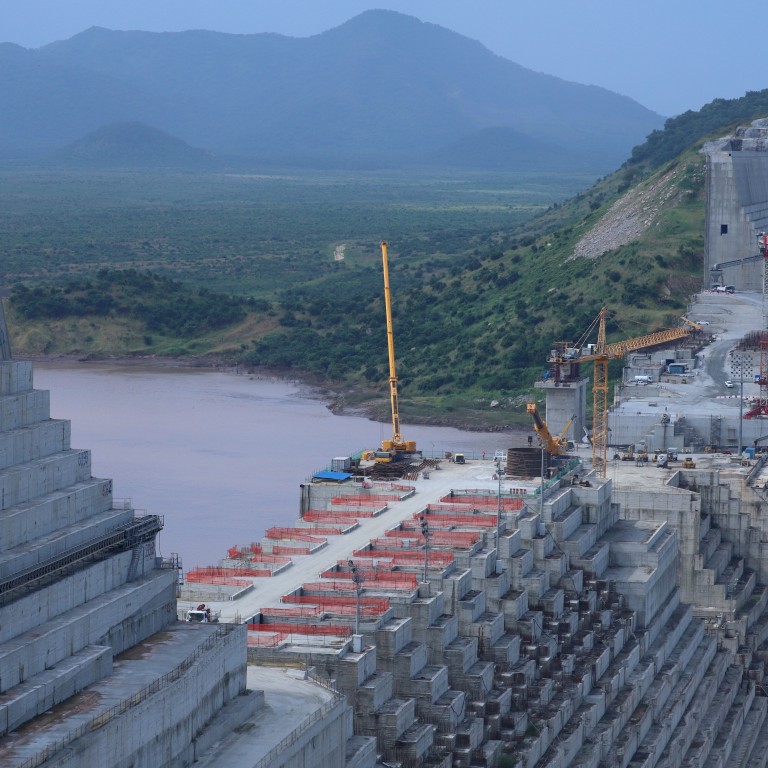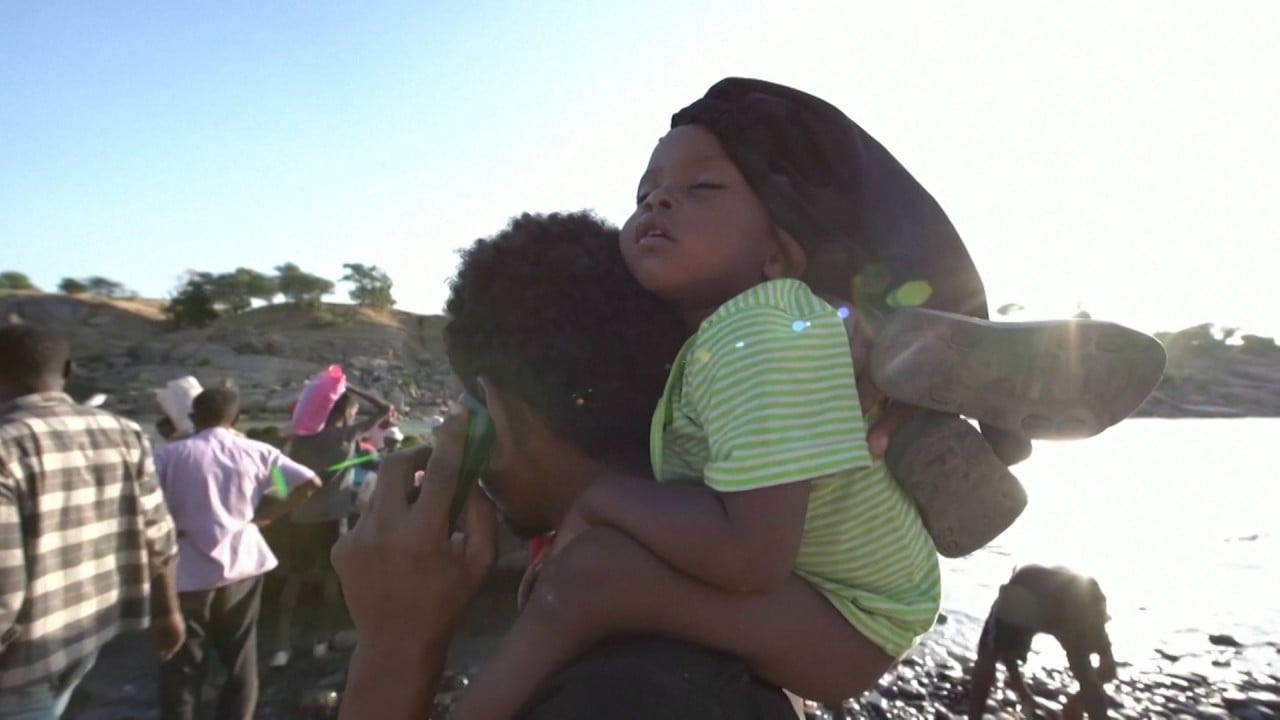
China backs African Union effort to resolve Ethiopian mega-dam dispute
- In rare show of unity, UN Security Council members agree to not take the lead in mediation efforts between Sudan, Egypt and Ethiopia
- Members can still offer management help, incentives or sanctions to encourage parties to reach a deal, analyst says
China has backed an Africa-led mediation process to resolve a dispute between Ethiopia, Sudan and Egypt over the operation of a massive hydropower dam on the Blue Nile.
China’s envoy to the United Nations, Zhang Jun, said Beijing supported efforts for the three countries to reach a deal through dialogue and consultation on the operation of the project.
The Blue Nile begins in Ethiopia and is an essential source of water for all three countries.
Ethiopia started building the mega dam in 2011, raising fears that it would lower water levels downstream in Egypt and Sudan.
Egypt and Sudan want Ethiopia to sign legal guarantees that a minimum volume of water will be released downstream to prevent drought. Ethiopia has rejected any intervention from the Security Council.
China welcomes Tigray ceasefire as Ethiopian conflict splits Security Council
In a rare show of unity on Thursday, most of the council members agreed to leave the mediation process to the African Union (AU).
Security Council members do not often take united stands on conflicts, such as the war in Tigray, where thousands of people have been killed and millions displaced.
But the dam dispute seems to be an issue on which all five permanent members of the council agree to let the African Union take the lead in helping to negotiate a solution, according to former US ambassador to Ethiopia David Shinn.
“In that sense, the recent Security Council session served a useful purpose. It made clear to Egypt and Sudan that the Security Council is not interested in intervening in the matter,” said Shinn, who is also a professor at George Washington University’s Elliott School of International Affairs.
Shinn said all five permanent members could offer technical help to improve water management in the Nile Basin and offer incentives or threaten sanctions if one or more parties to the dispute warranted such action.

00:59
Chinese-built railway links Ethiopia to sea
Zhang said the AU had made many efforts to facilitate the tripartite negotiations, spearheading efforts since 2015 that led to the three countries signing a declaration of principles on the dam.
The countries have held multiple rounds of talks under the auspices of the AU, but they have yet to agree on how the downstream countries will be compensated.
The US under former president Donald Trump tried unsuccessfully to resolve the dam dispute.
China has cause to tread carefully in the region. Money from Beijing has gone into massive infrastructure projects in all three countries, including into special economic zones, railway lines, highways, oil refineries and new cities such as the administrative capital city being built in Egypt.
Major state-owned Chinese companies are contracted to build parts of the dam, and Chinese firms and banks gave US$1.2 billion in loans to fund the dam’s electricity supply lines.

03:16
What is behind the fighting in Ethiopia’s northern Tigray region?
Due to diplomatic and economic interests, China has aligned its policy of non-interference in the internal affairs of states.
“On this issue, China remains consistent in its position that the parties should resolve their differences through dialogue and consultation,” Zhang told the Security Council.
Why China is taking a low profile on Ethiopia’s Tigray conflict?
Richard Gowan, UN director of the International Crisis Group, said “most UNSC members made it clear that they do not think the council should try to resolve this dispute”.
Gowan said China’s position on this was similar to those of other Security Council members. “There is a general feeling that the African Union is best placed to mediate this dispute, and the UN should limit itself to backing up AU efforts,” he said.
This consensus approach to the dam dispute contrasts with recent divisions in the Security Council over how to respond to the war in Tigray.
Gowan said China and Russia had defended the Ethiopian government from Western criticism over Tigray. “I think all the big powers want to keep this separate from the [dam] discussion,” he said.
However, the crisis group was “concerned that Sudan could get involved in the Tigrayan conflict as a way to get leverage over [the dam]”, he said.
The group said there was a risk that Sudanese military leaders, maybe with a nudge from Cairo, saw backing the Tigrayans as a way to ratchet up pressure on Prime Minister Abiy Ahmed as leverage in the dam dispute.
The Blue Nile is the Egyptian Nile’s main source of water. A further controversial element is a colonial-era treaty signed in 1929, which Ethiopia was not a party to, guaranteeing Egypt exclusive rights over the Nile’s waters. The treaty has been contested by other countries, including Ethiopia.
Home to about 100 million people, Egypt says its economy will suffer without the Nile’s waters and asserts that the dam poses an existential threat.
Ethiopia is pinning its industrialisation hopes on the dam, which is designed to produce 6,000 megawatts of power to more than double the country’s electricity production capacity.

